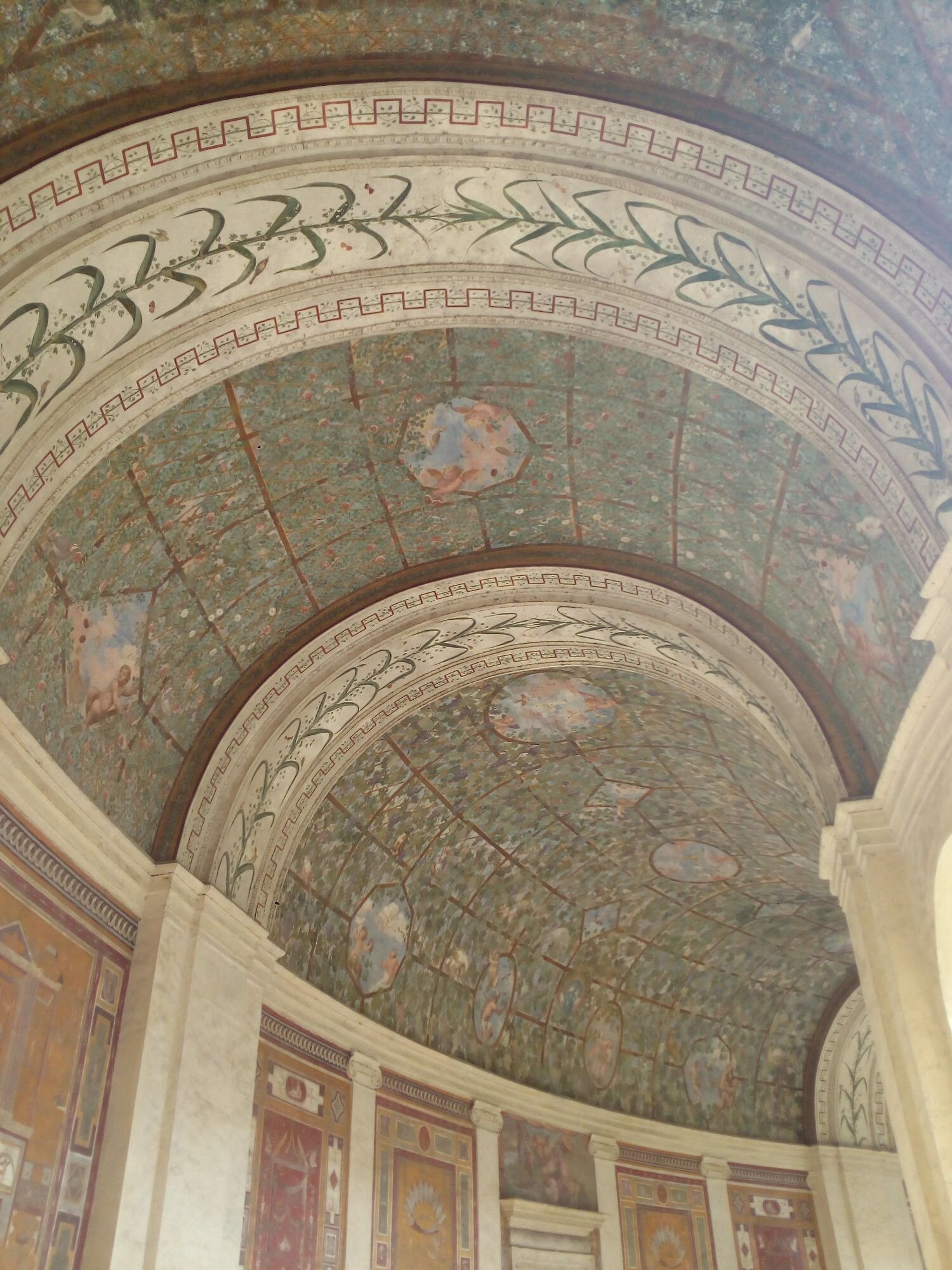
Among the wonders of the Etruscan Museum of Villa Giulia we have these vaults decorated with a fake pergola. Something really exciting, beautiful and colorful, which sheds light on a deeply felt aspect of Renaissance society: the relationship with Nature! The Villa Giulia of Rome is a perfect example about what was considered very good to see in a noble villa five hundred of years ago. Let's come with me to be astonished.
Just for one moment you should forget the wonderful collection of etruscan artifacts exhibited here (and if you want to know the symbol of the entire museum click here), in order to pay attention to Villa Giulia, the building where the museum is set, to know better one of the renaissance architectonical wonders of Rome. On two floors, with a sober but at the same time elegant façade, with a large garden and internal courtyard (in this case punctuated by a colonnade that develops following an exedra) and even a nymphaeum. The entire building follows a longitudinal axis based on the central body of the villa and on three consecutive open spaces, which close with the beautiful nymphaeum previously described. A symmetrical trend which, at the same time, gave to the designers the possibility to create a real corner of paradise, a continuous dialogue between inside and outside. Obviously, this represents the non plus ultra of this type of housing, due to the owner of the house who commissioned its construction in the middle of the sixteenth century: Pope Julius III. A man, therefore, having ample economic availability, as was the custom at the time, deriving directly from the papal coffers, from which the Pope could easily draw, or from the substances of his family of origin.
According to the tradition, the architect of Villa Giulia of Rome, inserted in a much wider context as it would rise on an area that previously had three vineyards and many other cultivated land, was maybe Vasari. Despite everything, however, the great eclecticism present in the building, the paintings and styles, the architectural forms and the interiors, the courtyard and the nymphaeum are part of a large artistic context that one man alone could hardly manage. It is certain however that great names such as Michelangelo himself, but also Bartolomeo Ammannati (in addition to Vasari) have lent their art and their advice for the construction of the building, while the pictorial part dealt in particular with masters such as Taddeo Zuccari or Prospero Fontana. All of them were masters, and their names are useful to understand how prestigious should be this villa, one of the main renaissance villas of Rome.
Could not miss, as we can see in other villas of the same period (I quote Villa Farnesina), a fake pergola that shows something more. The ceiling does not seem to end with a wall, but with a series of branches, natural elements and lots of greenery that flows into a blue sky, complete with clouds and cherubs that suggest, if anything were needed, the idea of a something heavenly. We are no longer inside a villa, but inside a fantastic garden, full of fruits and flowers, and with a non-existent vault that leads directly to infinity. A way like any other to embrace all of creation, and to give the wealthy guests the impression of having entered a different reality, different from the one perceived at the entrance! In short, it takes very little (a bit of perspective and chromatic illusionism) to make men travel with their minds who, in the end, wanted to spend some time in total relaxation. Personally, being a local tour guide in Rome, I love to come here, observing how the visitors are really surprised looking these pictorial wonders. Since the renaissance age they are impressed everybody,




